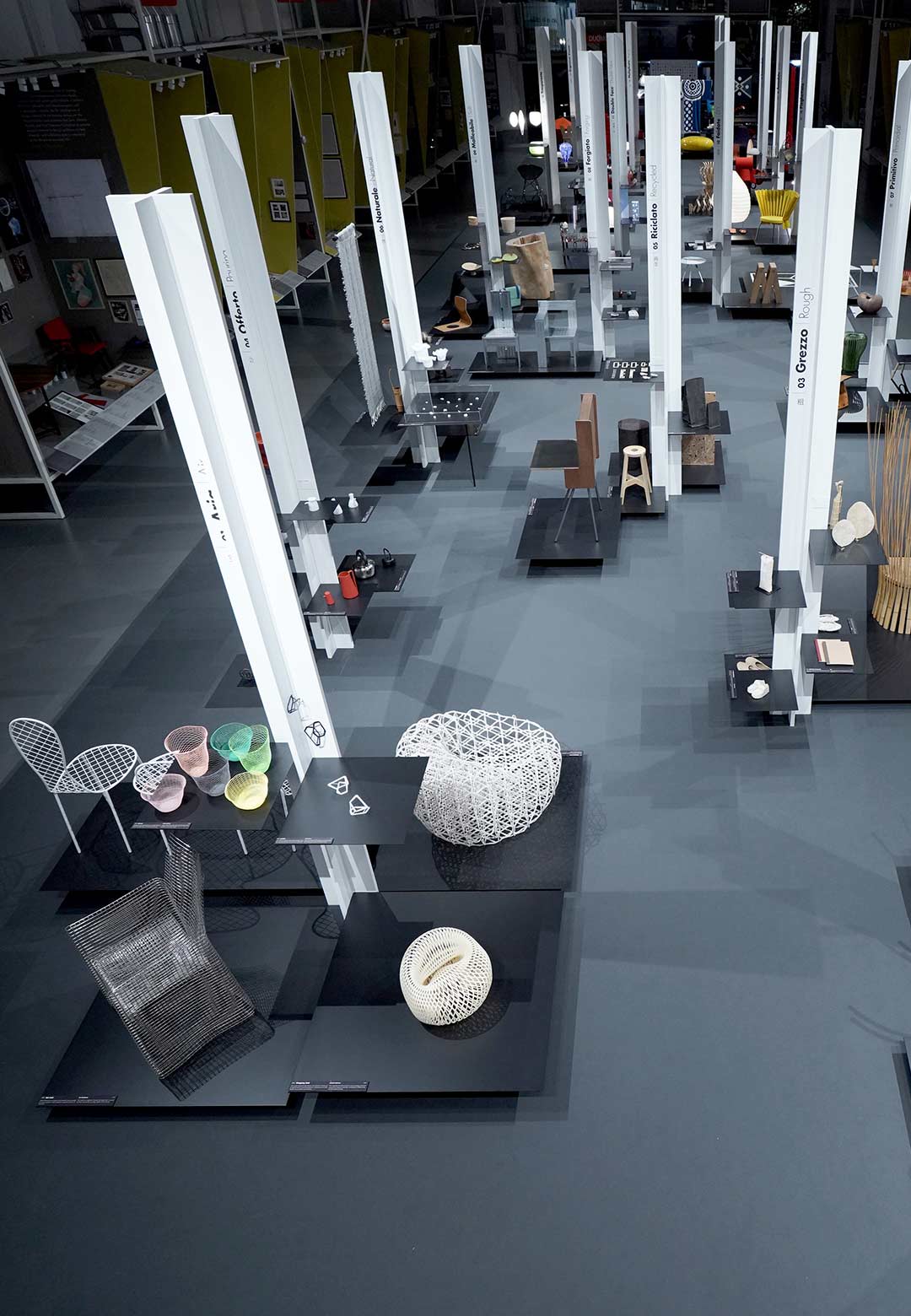The ADI Design Museum in Milan recently unveiled an exhibition titled ORIGIN of SIMPLICITY. 20 Visions of Japanese Design, which, as its name implies, showcased the concept of simplicity in Japanese design through the lens of 20 different interpretations. Curated by Italian historian Rossella Menegazzo with set and graphic design by Kenya Hara, the exhibition is being featured at the ADI Design Museum in Milan from March 23 to June 9, 2024. With this exhibit, the museum aims to display Japanese objects that go beyond a surface-level understanding of simplicity in design to explore the deeper philosophical roots of this concept in Japanese culture. It shows how simplicity in Japanese design is not just about minimalism or lack of ornamentation. It is more about a deep respect for nature, an appreciation for the beauty in imperfection, and a focus on crafting objects that are both practical and aesthetically pleasing at the same time.
Menegazzo, a historian at the University of Milan, focused on the history of Japanese art and culture, worked in collaboration with Japanese designer and curator Kenya Hara, who conceived the show’s layout as a forest through which visitors can walk. Each of the 20 tree groups showcases objects with similar qualities. They feature one-of-a-kind combinations of works by different designers and artists, interpreting the theme of simplicity. Additionally, separate sections feature keywords that encourage visitors to think about the nature of the objects displayed and guide them through the exhibition.
The displayed works highlight an intersection of design and craftsmanship to understand the origins of the concept of simplicity, which can be interpreted as emptiness (ku), space or silence (ma), sometimes readable as poverty (wabi) and consumption linked to use over time (sabi), and on other occasions as asymmetry, non-definition, and imperfection. These concepts are rooted in diverse Japanese philosophical schools ranging from Zen Buddhism to Shinto Animism.
All the design objects display hand-crafted skills, which feature age-old techniques—handed down from generations in workshops and ateliers, by master craftsmen—considered an intangible heritage. Moreover, these centuries-old skills focus on natural materials such as wood, paper, metal, ceramic and textiles, and sensitivity towards the features of each of these, making the distinction between a design object and an art product.
"Simplicity is born specifically from a profound adherence of forms to nature, almost an attempt to preserve that sacredness inherent in every element that Shinto animistic thought brings with it and laying the foundations of Japanese culture,” says Menegazzo. This approach intends to spotlight the connection between design and craftsmanship, the subtle balance between matter and human beings, and technique and technology, which is a constant feature of Japanese design.
The exhibition received the support of Tokyo’s Ishibashi Foundation, to whom ADI President Luciano Galimberti thanked for “the valuable agreement that has made it possible to carry out an unprecedented project of analysis and spreading of Japanese design in comparison with Italian design, and presenting the public with the cultural and artistic value, objectives and mission of the Foundation since its origins in 1956.”
He continues, “It is interesting to remember that just a few years earlier in 1954 in Italy, both the ADI and the Compasso d'Oro Award were created, with the same objective of promoting the popularisation and excellence of the Italian design system. Approximately 70 years later, both of these organisations share the same desire to produce a unique display event which, after the exhibition is held in our spaces in Milan, we hope will continue as far as Tokyo and beyond.”
The ORIGIN of SIMPLICITY. 20 Visions of Japanese Design exhibition has been produced by ADI Design Museum in partnership with The Museum Box, a leading international strategy and travelling exhibitions partner for museums. In addition, the museum also partnered with UNIQLO, a popular Japanese clothing brand that expresses the value of simplicity in its motto—‘Simple made better.’ The Japanese values showcased in the exhibition are also present in the design philosophy of UNIQLO, with the common aim of showcasing Japanese culture. The Japanese multinational NTT DATA is another of the exhibition’s partners.
More than 150 design objects feature in the exhibition, from traditional craft pieces to contemporary technological marvels, all united by a focus on simplicity. Most of the objects are being showcased in Italy for the first time and have been conceptualised by renowned names in contemporary design, some of whom have written the history of Japanese design, along with upcoming artists from later generations who are not as well-known to the international public. Featured designers include Japanese creatives such as Issey Miyake, Kengo Kuma, Junya Ishigami, Toyo Ito, Naoto Fukasawa, Shiro Kuramata, Kazuyo Sejima, and Ryuji Nakamura, to name a few.
The ORIGIN of SIMPLICITY. 20 Visions of Japanese Design is on view at the ADI Design Museum in Milan from March 23 to June 09, 2024.






 Sign in with email
Sign in with email










What do you think?